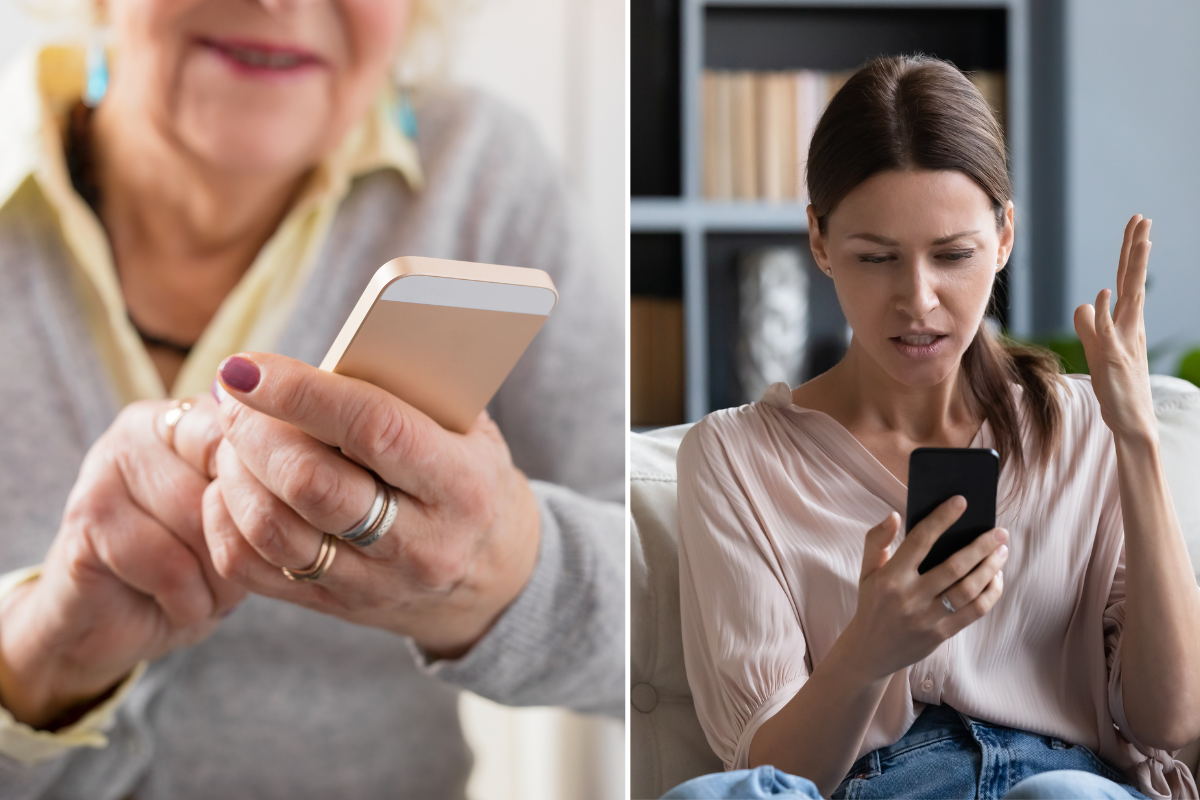On March 8, 2017, A Day Without a Woman, an international women's strike will take place.
In the spirit of the highly successful Women's March on Jan. 21, the International Women's Strike was organized to raise awareness of the seen and unseen ways women and girls contribute to the economy, all while receiving lower wages, enduring toxic and unsafe work environments, and facing discrimination.
Thousands gather at City Hall for the San Francisco Women's March. Photo by Josh Edelson/AFP/Getty Images.
If you're professionally and financially able to take off work and step away from home responsibilities, do so.
Organizers also encourage participants to avoid emotional labor and shopping for one day, with exceptions for minority- and woman-owned businesses.
Of course, many women, femmes, and gender-oppressed people do not have the economic security to take off from work, child care, or home duties for a day. That's part of the problem. Those who can strike will strike for them.
If you're unable to take off work (or are looking for something to do while on strike), here are 21 things you can do to support the Women's Strike.
1. Take part in an International Women's Day event in your community.
A Day Without a Woman is held on International Women's Day. Cities around the world are hosting events before, the day of, and the following weekend. RSVP to a local march, listening session, or talk in your neighborhood.
Women march on International Women's Day in downtown Los Angeles. Photo by Mark Ralston/AFP/Getty Images.
2. Wear red to show your support.
Organizers selected red as a bold, determined color "signifying revolutionary love and sacrifice." Need something red? Consider adding one of these red shirts to your wardrobe, as each one supports the American Heart Association's "Go Red for Women" campaign.
Photo by iStock.
3. Learn more about women in the labor movement.
Understanding the vital role women play in the labor movement — particularly women of color and women living in poverty — is vital to understanding how we move forward and improve working conditions for all women. Start your research by exploring the contributions of women like Rose Pesotta, May Chen, and Hattie Canty (no relation). And check out this book about the first successful all-women sit-in.
4. Dine out at a woman- or minority-owned restaurant.
If you must shop during the Women's Strike, support a small, woman-, or minority-owned business or restaurant. That money stays in your community and goes right into the pocket of a woman who needs it. Aren't sure where to find woman- or minority-owned businesses? Maybe...
Photo by iStock.
5. Join or support your local women's chamber of commerce.
Chambers of commerce work to grow, support, and sustain businesses in specific communities or run by specific populations. You can join your local women's chamber as a community member or business owner, or see if your employer is a corporate member. Funds go to support training, business resources, marketing materials, and more. Check out and support local black, Latino, and LGBTQ chambers of commerce as well.
6. Stream films by female directors.
Support the art and stories of female filmmakers and take a few hours to watch some of their work. Some of my favorites streaming now on Netflix include "Pariah" (Dee Rees), "Paris Is Burning" (Jennie Livingston), "Clueless" (Amy Heckerling), and "Girlhood" (Céline Sciamma).
Aasha Davis (left) and Adepero Oduye in "Pariah," 2011, ©Focus Features. Photo courtesy Everett Collection.
7. Support female artists and performers in your community.
No matter where you live, there are talented women on the rise who could use your support. Stand-up comedy, music, art, and other live performances are often free or low-cost and a great way to support the arts scene in your city.
8. Freshen up your timeline and follow female leaders, scientists, writers, and performers on Twitter.
Here's a list of black women that fit the bill exactly. Your timeline will thank you.
Start with first lady of New York City Chirlane McCray. She's a force for good. Photo by Photo by D Dipasupil/Getty Images.
9. Call or write your legislator and share where you stand on living wage, equal pay, family leave, reproductive justice, and maternal health issues.
These are not solely women's issues; they're issues that affect the health and success of everyone in this country. If women can't succeed, our country won't succeed either. Or better yet...
10. Look up the next town hall in your area.
Take your message straight to the people in charge by seeking out and attending a town hall. If your rep hasn't hosted one in a while, request one — and remind your representative that they work for you.
A town hall meeting with Sen. Tim Scott in North Charleston, South Carolina. Photo by Sean Rayford/Getty Images.
11. Contribute what you can to different women's groups and nonprofits.
Donate your time and money to local groups empowering and uplifting women and girls in your area. If you need some ideas, check out Black Girls Code, The Malala Fund, or the National Women's Law Center.
12. Buy a box of Girl Scout cookies.
The Girl Scouts have helped generations of girls take risks, explore the outdoors, learn new skills, and lead with confidence. Money raised from cookies helps fund these life-changing experiences. Plus, you know, cookies.
Molly Sheridan,13, and her sister Edie, 5, sell Girl Scout cookies in Chicago. Photo by Nova Safo/AFP/Getty Images.
13. You've got friends who should run for office. Tell them.
There are women in your life who would make great elected officials. Maybe they're already thinking about it or maybe it's off their radar. Mention it. Let them know you believe in them. Check out the great resources from Emily's List, Running Start, and She Should Run for women interested in pursuing political office.
14. Find your inner RBG, or at least attempt one of her intense workouts.
At 83, Justice Ruth Bader Ginsburg is the oldest and one of the strongest voices for women and progressive issues on the U.S. Supreme Court. She works out with a personal trainer to keep her mind and body strong so she can continue to do her job at "full steam." Channel your inner RBG and try it out for yourself. No robe required.
Ginsburg speaks at an annual Women's History Month reception on Capitol Hill in Washington, D.C. Photo by Allison Shelley/Getty Images.
15. Celebrate the women in your life and thank them for the work they do.
A call, text, note, or high five can go a long way to let the important women and girls in your life know you see them and value their contributions to your family, neighborhood, or community.
16. Inspire the next generation of brave women with picture books.
It's never too early to encourage children to dream, explore, and lead. Check out "The Apple-Pip Princess," "Molly, by Golly! The Legend of Molly Williams, America’s First Female Firefighter," and "Rosie Revere, Engineer" next time you're at the library.
"Rosie Revere, Engineer" by Andrea Beaty, illustrated by David Roberts.
17. Donate new packages of pads and tampons to shelters.
No woman should have to choose between menstrual products and their next meal, but that's a reality many women face when they're experiencing homelessness. Reach out to the shelters and domestic violence resource centers in your area to learn more and drop off donations. Or connect with national groups like Support the Girls that focus largely on this issue.
18. Take a minute for yourself.
Yogurt, candle, and chocolate commercials are constantly asking women to take time for themselves, but we rarely do. Self-care and taking a moment to reflect, breathe, and relax are critical. If we don't care for ourselves first, we can't care for the ones we love or stay strong in the fight for equality.
Photo by iStock.
19. Be an ally for other women you work with.
Support, repeat, and give credit for good ideas in meetings like the women of the Obama administration; keep and share a running list of back-up child care providers; offer to be a mentor or listening ear to new hires; work together to push back against sexist dress codes or natural hair bias; and encourage community, not competition.
Photo by WOCinTech Chat/Flickr.
20. Watch speeches from the Women's March to remember why you're fighting and stay inspired.
There are plenty of videos online from the national march in D.C. and satellite events around the globe. Take a few minutes to remember the enthusiasm, unity, and revolutionary spirit of the day and use it to fuel your action going forward.
Photo by Emma McIntyre/Getty Images.
21. Share why you're striking or why you'd like to strike with your network.
Be sure to use the hashtags #DayWithoutAWoman and #IStrikeFor.
If your job isn't secure or you don't feel comfortable sharing online, confide in a person you trust. Telling our stories is key to helping everyone understand that our challenges, struggles, and issues are not exceptions to the rule — in fact, they're all too common.
However you mark the International Women's Strike, make it your own.
This is your movement, your day, your chance to take part in a global show of support for women, femmes, and gender-oppressed people. Make it your own, and make it count.
Image via Women's March.







 Kids raised in the '50s and '60s were not taught much about openness and vulnerability. Photo by
Kids raised in the '50s and '60s were not taught much about openness and vulnerability. Photo by 

 A Gen X kid watches MTV with a TV dinner.Photo Credit: YouTube, Null Parade
A Gen X kid watches MTV with a TV dinner.Photo Credit: YouTube, Null Parade A Gen X man plays video games.Photo Credit: YouTube, Null Parade
A Gen X man plays video games.Photo Credit: YouTube, Null Parade A Gen X kid drinks water from a hose.Photo Credit: YouTube, Null Parade
A Gen X kid drinks water from a hose.Photo Credit: YouTube, Null Parade